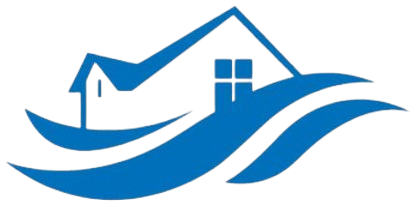Toilet Overflow Cleanup in North Bank, California
Possible Causes of Toilet Overflow
Toilet overflows are often caused by clogs that block the flow of water and waste. These blockages can result from excessive toilet paper, foreign objects, or buildup in the sewer line. When the drain gets obstructed, water has nowhere to go, leading to an overflow that can flood your bathroom.
Another common cause is a malfunctioning flapper or other internal components of the toilet. If the toilet’s fill valve or float gets stuck, it can cause continuous flushing or water to run endlessly, eventually leading to a flood. Additionally, issues like sewer line backups due to tree roots or aging pipes can also result in sewage spilling into your bathroom, creating a serious water damage situation.
How We Can Fix Your Toilet Overflow Issue
When you contact our team, our experts will arrive promptly to assess the severity of the overflow and identify its source. We start by inspecting your plumbing to pinpoint whether the problem is a clog, a faulty part, or a sewer backup. Our advanced tools, such as hydro-jetting and drain cameras, enable us to locate and clear blockages efficiently.
Once the cause is identified, we focus on thorough cleanup and water extraction to prevent further damage. Our team uses professional-grade equipment to remove standing water and dry affected areas quickly. We also sanitize the space to eliminate odors and prevent mold growth, ensuring your home is safe and healthy.
In cases where sewage has contaminated your property, we implement specialized sewage removal and disinfecting protocols. Our goal is to restore your bathroom to its original condition, addressing both the water damage and sanitation concerns. We work diligently to complete repairs and ensure your plumbing system is functioning properly to prevent future overflows.
Why Choose Us for Toilet Overflow Restoration
Our team has extensive experience in handling all types of water damage scenarios, including toilet overflows. We understand that such situations occur unexpectedly and require quick, reliable solutions. That’s why we prioritize prompt response times and efficient service to minimize damage and disruption to your daily life.
We utilize the latest technology and industry-standard techniques to deliver thorough cleanups and lasting repairs. Our experts are licensed, insured, and trained to handle even the most complex water damage emergencies. We believe in transparency and communicate clearly throughout the process so you’re always informed about the work being done.
Customer satisfaction is at the core of our service. We not only focus on restoring your bathroom but also on providing peace of mind. Our team works diligently to ensure your health and safety, giving you confidence in the quality of our work. For trusted, professional toilet overflow cleanup, call us today at (888) 884-7150.
Frequently Asked Questions
What should I do immediately after a toilet overflow?
Stop the water flow by turning off the toilet’s shut-off valve. Remove any excess water with towels or a wet/dry vacuum. Avoid flushing again, and contact our experts promptly for a professional cleanup.
Can I fix a toilet overflow myself?
While minor clogs can sometimes be addressed with a plunger, sewage backups or mechanical failures require professional assistance. Attempting repairs without proper tools or knowledge can worsen the situation or cause health hazards.
Is sewage damage covered by insurance?
It depends on your policy. Many standard homeowners’ insurance plans cover water damage resulting from toilet overflows, especially if caused by a sudden incident. Consult your provider and call us for a detailed assessment and repair documentation.
How long does a typical cleanup take?
The duration depends on the extent of water damage and sewage contamination. Minor incidents might be resolved within a few hours, while extensive damage could take longer. Our team works efficiently to restore your bathroom as quickly as possible.
What preventative measures can I take?
Regular maintenance of your plumbing system and avoiding flushing non-flushable items can prevent overflows. Installing an upgraded fill valve and sewer line inspections can also help detect issues early before they escalate.
